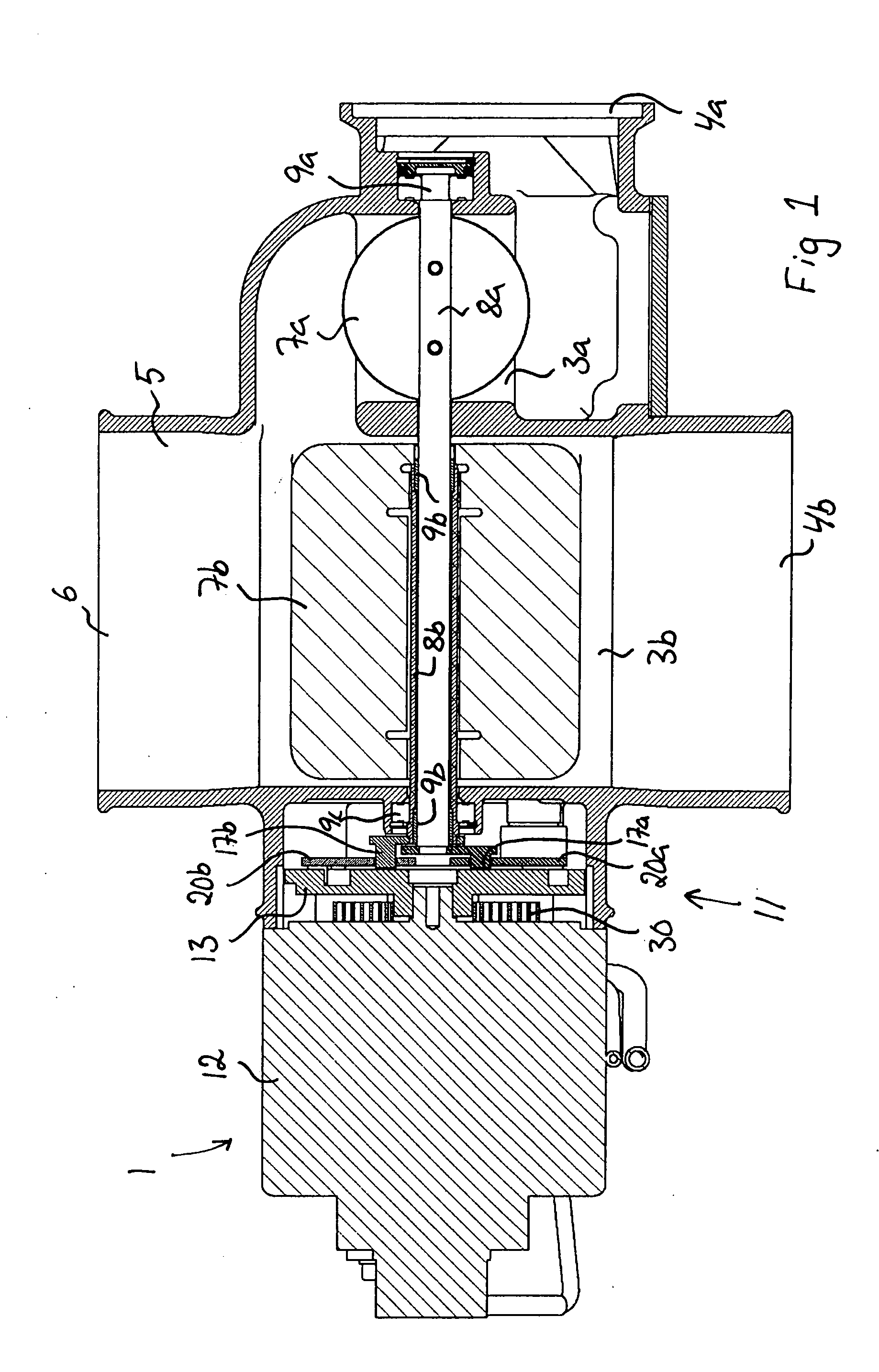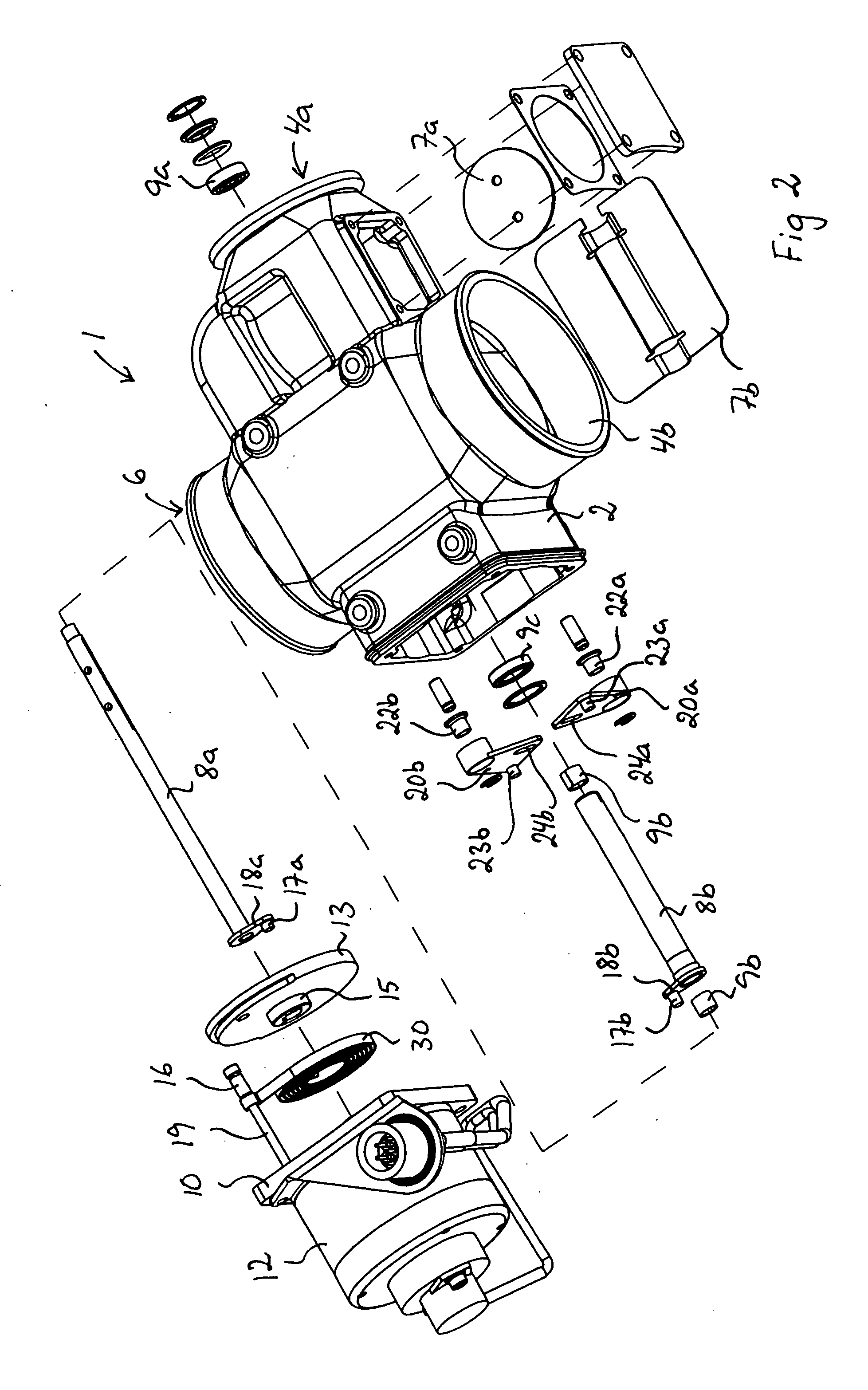Valve device
a valve device and valve body technology, applied in the direction of shock absorbers, water supply installations, machines/engines, etc., can solve the problems of unfavorable soot accumulation, damage to the combustion engine or damage,
- Summary
- Abstract
- Description
- Claims
- Application Information
AI Technical Summary
Benefits of technology
Problems solved by technology
Method used
Image
Examples
first embodiment
[0016] A valve device 1 according to the present invention is illustrated in FIG. 1-4. This valve device 1 comprises a valve housing 2 with a first flow channel 3a and a second flow channel 3b. The first flow channel 3a is intended to receive a fluid entering the valve device via a first inlet opening 4a of the valve housing, and the second flow channel 3b is intended to receive a fluid entering the valve device via a second inlet opening 4b of the valve housing. The flow channels 3a, 3b are at their downstream ends connected to a common channel 5, which extends further on to an outlet opening 6 of the valve housing. Fluid entering the valve housing via the inlet openings 4a, 4b will consequently be brought together and mixed after the passage through the flow channels 3a, 3b so as to thereafter flow out of the valve housing via the outlet opening 6.
[0017] A first damper 7a, which is fixed to a first damper shaft 8a, is arranged in the first flow channel 3a, and a second damper 7b, ...
second embodiment
[0025] A valve device 101 according to the present invention is illustrated in FIG. 5-7. This valve device 101 comprises a valve housing 103 with a first flow channel 103a and a second flow channel 103b. The first flow channel 103a is intended to receive a fluid entering the valve device via a first inlet opening 104a of the valve housing, and the second flow channel 103b is intended to receive a fluid entering the valve device via a second inlet opening 104b of the valve housing. The flow channels 103a, 103b are at their downstream ends connected to a common channel 105, which extends further on to an outlet opening 106 of the valve housing. Fluid entering the valve housing via the inlet openings 104a, 104b will consequently be brought together and mixed after the passage through the flow channels 103a, 103b so as to thereafter flow out of the valve housing via the outlet opening 106.
[0026] A first damper 107a, which is fixed to a first damper shaft 108a, is arranged in the first f...
PUM
 Login to View More
Login to View More Abstract
Description
Claims
Application Information
 Login to View More
Login to View More - R&D
- Intellectual Property
- Life Sciences
- Materials
- Tech Scout
- Unparalleled Data Quality
- Higher Quality Content
- 60% Fewer Hallucinations
Browse by: Latest US Patents, China's latest patents, Technical Efficacy Thesaurus, Application Domain, Technology Topic, Popular Technical Reports.
© 2025 PatSnap. All rights reserved.Legal|Privacy policy|Modern Slavery Act Transparency Statement|Sitemap|About US| Contact US: help@patsnap.com



